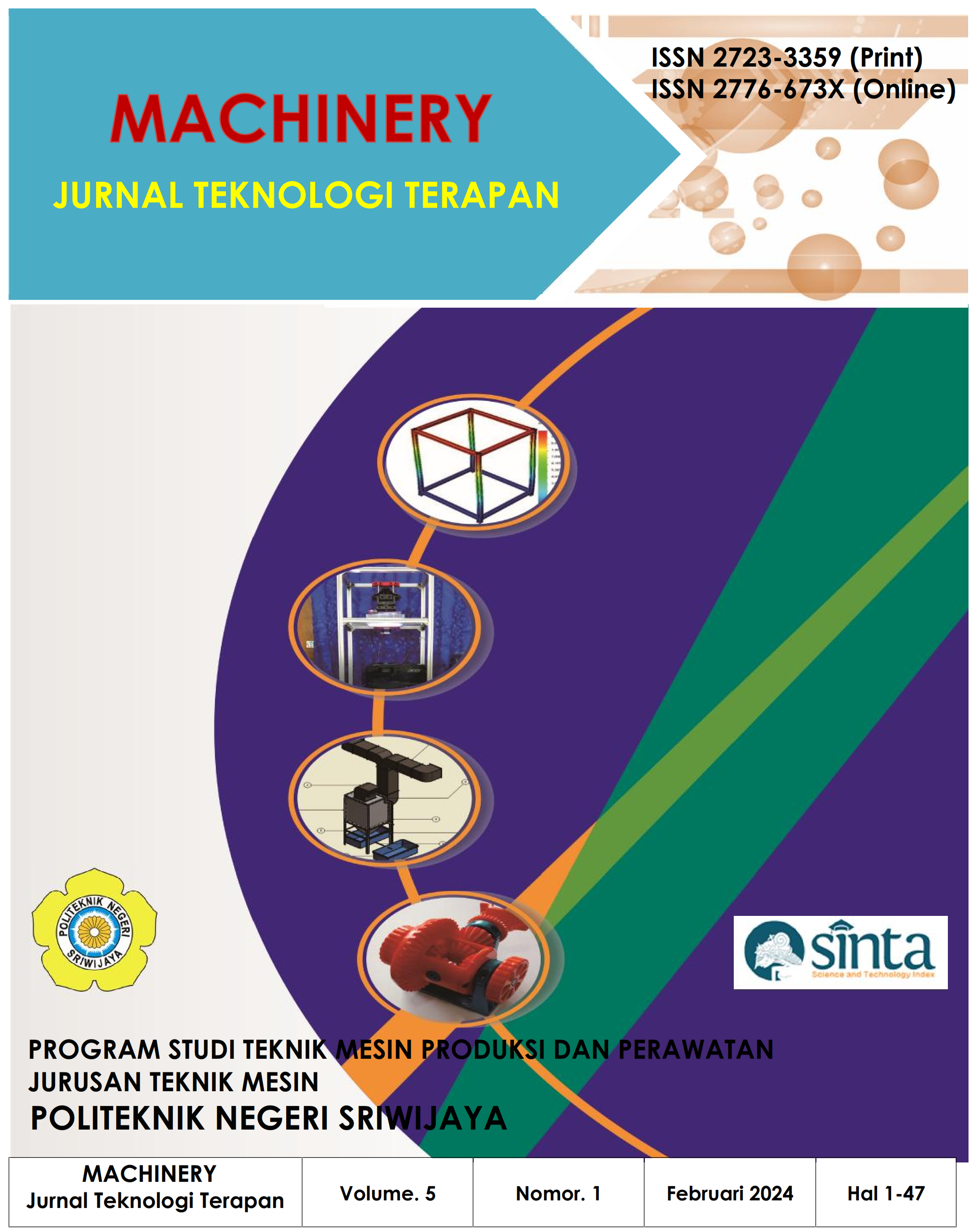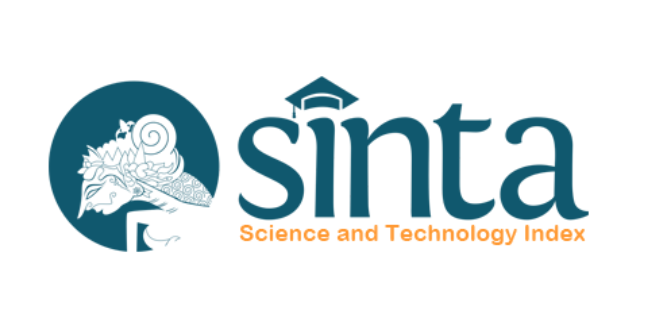ANALISA PENGARUH PERSENTASE REDUKSI TERHADAP STRUKTUR MIKRO DAN SIFAT MEKANIK PENARIKAN KAWAT BAJA AISI 1006
DOI:
https://doi.org/10.5281/zenodo.10728881Keywords:
Wire drawing, AISI 1006, Microstructure, Tensile test, Microhardness, Vickers MethodAbstract
The wire drawing process is a metal forming process by pulling the wire bar through the dies by a tensile force. The purpose of this process is to reduce the diameter of the wire rod without reducing volume and mass. The material used in this study was AISI 1006. The percentage of reduction is 22.14%, 17.35%, and 14.26%. The microhardness of these wires was tested using Microhardness Vickers Method, the result is 37.6433 HV, 37.7666 HV, and 38.6233 HV respectively. The maximum tensile strength value of the wires is 197.8146 MPa, 111.271 MPa, and 71.005 MPa, while the yield strength is found to be 176.379 MPa, 100.926 MPa, and 64.593 MPa. With a greater percentage of reduction on the wire, the microstructure became elongated, flatter, and much denser.
Â
Downloads
References
Avitzur, B. (1964). Analysis of Wire Drawing and Extrusion Through Conical Dies of Large Cone Angle. Manufacturing Science and Engineering (pp. 305-314). The American Society of Mechanical Engineer.
Febrianti, D. (2016). Influence Increased Reduction in The Microstructure and Mechanical Properties of Brass Alloys cu-zn 70/30 after The Warm Rolling Process at 400°C. MRI, 10(3).
Hasan, A. K., & Hashim, A. S. (2015). Three Dimensional Finite Element Analysis of Wire Drawing Process. Universal Journal of Mechanical Engineering 3, 71-82.
Li , G., Shuang, Y., Sun, S., & Ding, S. (2017). Wear Mechanism and Performance of Abrasively Ground Polycystalline Diamond Tools of Different Diamond Grains in Machining Titanium Alloy. Journal of Manufacturing Processes(29), 320-331.
M. Firman, M. D. (2015). Analysis Tensile Strenght and Roughness of Wire Drawing to Percentage Reduction of Copper. Jurnal Teknik Mesin Universitas Jember, 1-5.
Manurung, V., Wibow, Y., & Baskoro, S. (2020). Panduan Metalografi. Jakarta: LP2M Politeknik Manufaktur Astra.
Martawirya, Y. Y. (2004). Ekstrusi dan Penarikan. Bandung: ITB.
Martina, D. S. (2017). Percentage reduction of Copper Materal Moated Monel of Wire Drawing of Mechanical Properties. Cimahi: Jenderal Ahmad Yani University.
Mathur, K. K., Dawson, P. R., & . (1990). Texture Development During Wire Drawing. Journal of Engineering Materials and Technology, 292-297.
Moon, C., & Kim, N. (2012). Analysis of wire-drawing process with friction and thermal conditions obtained by inverse engineering. Journal of Mechanical Science and Technology, 2903–2911.
Steel, P. K. (2019). The Composition Of AISI 1006 Steel. Serang, Banten: PT Kabatama Raya Wire Industry.
Sutrimo. (2015). Bahan Ajar Teknik Pembentukan. Bandung: Politeknik Negeri Bandung.
Wahid, S. (1742). Pengetahuan Bahan. Surabaya: Institut Teknologi Sepuluh Nopember.
Wijaya, A., Tobing, S., & Sutanto , H. (2018). Optimasi Sudut Die, Rasio Reduksi, dan Panjang Bearing Terhadap Tegangan Penarikan Kawat Aluminium dengan Finite Element Method. Manufacture Research, 22.
Zidani, M., Messaoudi, S., Dendouga, F., Baudin, T., Derfouf, C., Boulagroun, A., & Mathon, M. (2012). Study of the Relation between Microstructure and Properties (Mechanical/Electrical) of Copper Wire Drawing and Annealed. Proceedings of the 2nd International Congress APMAS2012 (pp. 470-472). Antalya, Turkey: ACTA PHYSICA POLONICA A.
Downloads
Published
How to Cite
Issue
Section
License
Copyright (c) 2024 Authors and Publisher

This work is licensed under a Creative Commons Attribution-NonCommercial-NoDerivatives 4.0 International License.
The Authors submitting a manuscript do so on the understanding that if accepted for publication, copyright of the article shall be assigned to MACHINERY: Jurnal Teknologi Terapan as publisher of the journal. Copyright encompasses rights to reproduce and deliver the article in all form and media, including reprints, photographs, microfilms, and any other similar reproductions, as well as translations.Â
MACHINERY: Jurnal Teknologi Terapan and the Editors make every effort to ensure that no wrong or misleading data, opinions or statements be published in the journal. In any way, the contents of the articles and advertisements published in MACHINERY: Jurnal Teknologi Terapan are the sole responsibility of their respective authors and advertisers.








